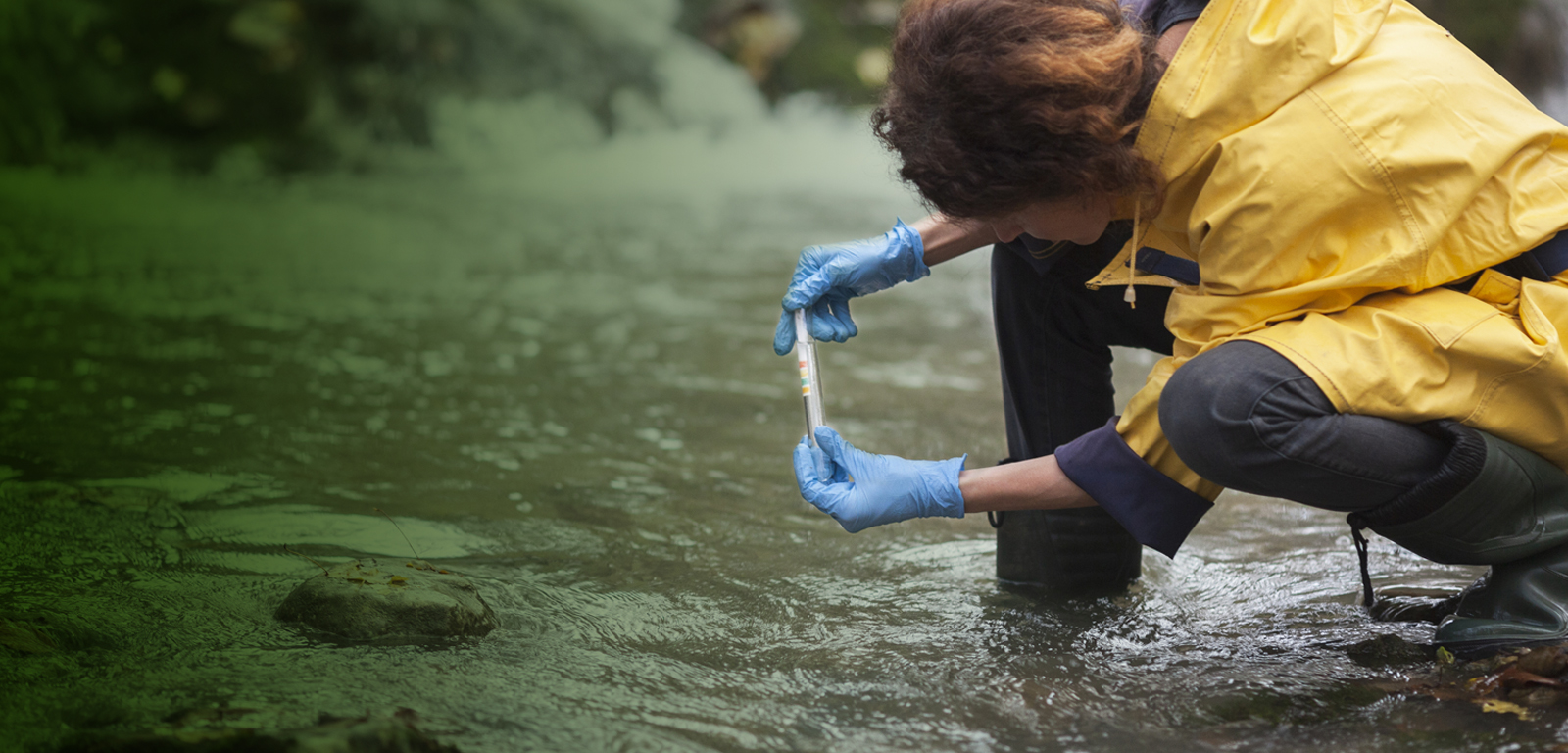Subject
Ecotoxicology
General details of the subject
- Mode
- Face-to-face degree course
- Language
- English
Description and contextualization of the subject
Ecotoxicology is the study of the effect of environmental contaminants on living organisms - a merger of the study of the environment (ecology) with the study of interactions of chemicals with individual living organisms (toxicology). In this course, we will learn about how toxicants interact with and impact biological organisms, how ecotoxicology is measured in practice, and how to critically analyze ecotoxicological papers through case studies.Aims
¿ To provide the students withj an introduction to environmental science and ecotoxicology, and to contribute to the student's knowledge about how pollutant chemicals released in nature may cause adverse effects in organsisms, populations and ecosystems.
Objectives
At the end of the unit, you should:
1. Know the different classes of pollutants, major sources of pollution, the environmental behaviour and fate of pollutants in ecosystems
2. Understand how toxicants interact with and impact biological organisms. We will learn about mechanisms of toxicity, how organisms accumulate and excrete toxic compounds, and the effects of toxicants on individuals, populations, and whole ecosystems.
3. Know how ecotoxicology is measured in practice. We will learn about standardized toxicity tests, alternative testing strategies, and the use of quantitative modeling for Ecological Risk Assessment.
4. Be able to critically analyze primary scientific literature. Students will read ecotoxicology papers and identify important points and summary measurements for comparison within the literature on the same toxicant and between contaminants of interest. More importantly, students will be able to read these papers critically, understanding the limitations of certain measurements or assumptions and identifying potential weaknesses of the methodology or analysis.
Teaching staff
| Name | Institution | Category | Doctor | Teaching profile | Area | |
|---|---|---|---|---|---|---|
| ORTIZ ZARRAGOITIA, MAREN | University of the Basque Country | Profesorado Agregado | Doctor | Bilingual | Cellular Biology | maren.ortiz@ehu.eus |
Competencies
| Name | Weight |
|---|---|
| Que el estudiante sepa y entienda los conceptos teóricos de los ciclos biogeoquímicos, así como los aspectos prácticos de los mismos y sus aplicaciones. | 10.0 % |
| Que el estudiante sepa y entienda los conceptos teóricos en torno a la biodisponibilidad de contaminantes químicos ambientales, así como los aspectos prácticos y sus aplicaciones. | 10.0 % |
| Que el estudiante sepa y entienda los conceptos teóricos en torno a los mecanismos de toxicidad de contaminantes químicos ambientales, así como los aspectos prácticos y sus aplicaciones. | 10.0 % |
| Que el estudiante sepa y entienda los conceptos teóricos en torno a los Programas de seguimiento ambientales de los niveles y efectos de los contaminantes químicos ambientales, así como los aspectos prácticos y sus aplicaciones. | 10.0 % |
| Que el estudiante conozca los conceptos, práctica y aplicaciones de la biorremediación ambiental de entornos degradados por contaminación química. | 10.0 % |
| Que el estudiante sepa y entienda los conceptos, práctica y aplicaciones de biomarcadores celulares y moleculares de exposición y efecto de los contaminantes químicos ambientales, con énfasis en cuestiones relacionadas con genotoxicidad y mutagenicidad, disrupción endocrina, estrés general, estrés oxidativo, inmunotoxicidad, etc. | 10.0 % |
| Que el estudiante conozca los mecanismos de resistencia de los organismos vivos (tolerancia, resistencia, resiliencia, adaptación, plasticidad, etc.) frente contaminantes químicos ambientales. | 10.0 % |
| Que el estudiente sea capaz de elaborar una memoria científica, realizar una presentación pública de los resultados de su investigacióny debatir sobre el trabajo realizado. | 10.0 % |
| Que el estudiante domine los conceptos y práctica de la evaluación de riesgo ambiental debido a los contaminantes químicos, incluyendo evaluaciones de ciclo de vida, y sea capaz de aplicarlos para la gestión medioambiental conociendo el marco legislativo y regulatorio en vigor tanto a nivel europeo, como estatal y autonómico (REACH, directivas marco europeas, legislación ambiental, etc). | 10.0 % |
| Que el estudiante sea capaz de recolectar, registrar y analizar (tratamiento y computerización) datos sobre contaminación y toxicidad (de campo y de laboratorio) mediante técnicas y equipamiento de última generación. | 10.0 % |
Study types
| Type | Face-to-face hours | Non face-to-face hours | Total hours |
|---|---|---|---|
| Lecture-based | 18 | 27 | 45 |
| Seminar | 12 | 18 | 30 |
| Workshop | 14 | 21 | 35 |
| Applied fieldwork groups | 6 | 9 | 15 |
Training activities
| Name | Hours | Percentage of classroom teaching |
|---|---|---|
| Classroom/Seminar/Workshop | 65.0 | 40 % |
| Field practicals | 15.0 | 40 % |
| Lectures | 45.0 | 40 % |
Assessment systems
| Name | Minimum weighting | Maximum weighting |
|---|---|---|
| Drawing up reports and presentations | 40.0 % | 40.0 % |
| Written examination (theory) | 60.0 % | 60.0 % |
Learning outcomes of the subject
At the end of the unit, you should be able to:1. define and interpret effective concentrations (e.g. LC50, EC50)
2. undertake risk and hazard assessments of chemicals, based on physico-chemical parameters and ecotoxicological index
3. estimate the effects of chemical substances on populations of organisms
4. to use characteristics and measured properties to interpret and assess the risks posed by chemicals for organisms, in various work contexts
Temary
Topics covered include:Types of pollution, pollutants
Sources of pollutants
Reactivity and fate of pollutants in ecosystems
Bibliography
Basic bibliography
Walker, C. H., Sibly, R. M., Hopkin, S. P., Peakall, D. B. (2012). Principles of Ecotoxicology. CRC Press, Boca Raton, USA.Hoffman, D. J., Rattner, B. A., Burton, G. A., Cairns, J. (1995). Handbook of Ecotoxicology. Lewis, Boca Raton, USA


